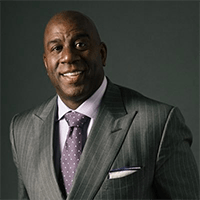HIV 101: Online
Hello,
HIV Alliance is dedicated to the education of Oregon’s students. Sexual health education is the first pillar to prevent the spread of viruses. Please, use this sight as a resource for basic information and knowledge on HIV and other sexually transmitted infections or diseases. There are only THREE steps to completing this online assignment!
HIV Alliance’s Education program fulfills state requirements for Oregon’s Comprehensive Sexuality Standards. For parents or teachers wanting more information or resources, please reach out to us! Thank you for engaging with this program.
Becky Noad
Northern Prevention & Education Manager, HIV Alliance
education@allianceor.org
What to Do?
There are three simple steps:
- Complete the HIV PRE-survey here.
- Watch the HIV 101 video here.
- Don’t forget to follow along with a copy of our power point presentation below!
- Mira el video del VIH 101 en español aquí.
- Complete the HIV POST-survey here.
Here is a copy of our Middle School PowerPoint presentation.
Here is a copy of our High School PowerPoint presentation.
Aquí hay una copia de nuestra presentación bilingüe de PowerPoint sobre VIH.
Additional Resources
Thanks for your participation in this educational activity. Please keep reading this page for more information and resources. Below, you will find information from the Oregon Department of Education and from the Centers for Disease Control.
Read more on our website: www.hivalliance.org
Oregon Department of Education:
- Comprehensive Sexuality Laws: https://www.oregon.gov/ode/rules-and-policies/StateRules/Pages/HIV--AIDS-Law.aspx
- HIV/AIDS Questions and Answers: https://www.oregon.gov/ode/students-and-family/healthsafety/Pages/HIV-AIDS-Questions-and-Answers.aspx
- Comprehensive Sexuality FAQ’s: https://www.oregon.gov/ode/students-and-family/healthsafety/Documents/sexedfaq.pdf
Centers for Disease Control: https://www.cdc.gov/std/hiv/default.htm
YouTube Videos for more information:
- Recommended for Middle School Students (3 minutes): https://youtu.be/DzXgCW9YcNg
- Recommended for High School Students and Adults (4 minutes): https://youtu.be/FDVNdn0CvKI
- For the biology buffs! https://youtu.be/horX8xLVpCg https://youtu.be/5g1ijpBI6Dk
HIV Basics
The Human Immunodeficiency Virus targets and infects the human white blood cell known as the CD4 or Helper T cell. The Helper T cell helps to identify viruses, and if it cannot do this then we are left vulnerable to infections that we cannot fight. HIV can spread and kill off those Helper T cells to extremely low levels. If left untreated HIV can lead to an AIDS diagnosis.
There is still no cure or vaccine for HIV at this time (2020). Once somebody acquires HIV, they will have it for the rest of their life. That is why it is so important to learn how to NOT transmit HIV! With medication, HIV can be managed to suppress the virus and allow the immune system (those white blood cells) to thrive and keep us healthy. HIV cannot be spread through casual contact. It is not on the skin, or in the air, or in sweat or saliva. HIV does not target any one kind of person; but can affect anyone with blood. The only way to know your own status for HIV is to be tested.
Stage 1: Acute Infection – about 2-4 weeks after exposure, can look like the flu. These are the only symptoms.
Stage 2: Clinical Latency – there are no other symptoms while the CD4 cells are dying and the number of HIV cells are increasing in the blood stream. This stage can take around 8-11 years to complete before HIV is able to develop into AIDS.
Stage 3: AIDS – having 200 (or less) of those CD4 cells per cubic-millimeter of blood AND/OR being more vulnerable to Opportunistic Infections.
6 Infectious Fluids that Can Transmit HIV
- Blood
- Semen
- Pre-Ejaculate fluid
- Vaginal Fluid
- Anal Fluid
- Breast Milk
Ports of Entry (places on our bodies that HIV could transmit through)
- Direct access to blood (sharing needles/razors/tears in skin)
- The anus
- The vagina
- Open cuts or wounds
- Mucous Membrane (eyes, nose, mouth, urethra)
People Living with HIV
In our lessons, we tend to talk about celebrities that are known to have HIV. HIV does not discriminate, it can affect any person. Here are a few of their stories.

Earvin “Magic” Johnson (he/him) – A basketball legend from the LA Lakers, Magic Johnson was transmitted HIV while having unprotected sex outside of his marriage. He retired from the NBA in 1991 after announcing his HIV status publicly. Many players were fearful to play with him on the court, risking transmission. We know that HIV cannot be transmitted through sweat or from body-to-body contact; but with immense fear and mistrust of HIV in the 80s and 90s, many players would not want to take a chance playing alongside Magic Johnson. Magic returned to play on the USA Men’s Olympic Basketball Team, named “The Dream Team”, which took Gold in the 1992 Olympic Games. Publicly living with HIV, Magic helps to dispel myths and stigma that HIV is considered a “gay mans disease”; as Magic Johnson is not a gay man. Since retiring from basketball for good, Magic has become an HIV/AIDS activist and advocate for safer sex.
- Magic Johnson's Announcement: https://youtu.be/FORjFF-ZyIo

Ryan White (he/him) – In a tragic accident, young Ryan is known to have received HIV from a blood transfusion just after his 13th birthday in December of 1984. Before the FDA had the technology to screen blood for infections like HIV (and before we knew about HIV and the AIDS crisis) many people were donating HIV+ blood to blood banks because they did not know they had HIV. Ryan was the recipient of fear-based bullying. He was removed from school – the families of his small Indiana hometown were scared he would transmit the virus at school. Gunshots were fired at his house. He and his family fought a long legal battle in which he was eventually allowed to return to the school setting. Ryan died in 1990, one month before he would graduate high school. Later that year, US Congress and President Bush, Sr. passed the Ryan White CARE Act – offering access and assistance for those living with HIV.
- News clips about Ryan White: https://youtu.be/t6bv7uSoMEM

Eazy-E (Eric Wright) (he/him) – Eazy-E is best known for his time in the West Coast rap group: N.W.A. He is still It is still unclear how Eazy-E contracted HIV, but he was unaware of his status until it was simply too late for him to do anything about it. His story is featured in the movie “Straigh Outta Compton” (2015). He was diagnosed with AIDS in February of 1995, and died from AIDS related complications (pneumonia) in March of 1995. In the time between his diagnosis and death, he married his partner and wrote a farewell message to his fans. Eazy-E’s story emphasized not being tested at all. He may have been able to seek medical attention and guidance if he had known his status sooner.

Amanda Blake (she/her) – An actress and a Cheetah breeder, Amanda Blake was best know for her role as Ms. Kitty for nearly two decades on the Western television series Gunsmoke. According to her doctor, Amanda had multiple health issued, including cancer. She was not known as sexually-promiscuous and it is believed she transmitted HIV from one of her husbands. She died at the age of 60 of AIDS related hepatitis – a viral infection of the liver.

Jonathan Van Ness (he/she/they) – Jonathan is possibly most well known for their role on the revived television show Queer Eye. Jonathan seems to live life with the utmost positive and infectious attitude to each person they meet. Jonathan recently publicized their HIV status in the fall of 2019. Jonathan has lived with HIV since about 2012. Jonathan’s book Over the Top describes some of what it is like to live with HIV. Jonathan is a loud and proud in many ways and talks openly about how to fight the stigma and fear that there is on people living with HIV (PLWHIV).
- An interview with Jonathan Van Ness: https://youtu.be/KB6YyUmpNmU

Greg Louganis (he/him) – Another famous athlete and Olympic gold medalist for the USA, Greg Louganis is an openly gay man living with HIV today. He was diagnosed with HIV less than a year before his time in the 1988 Seoul, South Korean, Olympics. He had a head injury during these games and bled into the pool. It was not until multiple years later that he publicly announces he had HIV. It is controversial whether or not he should have informed Olympic doctors, staff, and other Olympic Athletes that he had HIV at the time for the risk of transmission. The CDC says that chlorine in pool water will kill any HIV cells, and no other Olympians were diagnosed with HIV from that diving sports competition. While no harm or mishap came from this event, stigma and fear can keep someone from sharing their personal health diagnoses with others. Still, Louganis has since stated he acted irresponsibly in not telling others of his HIV status.
- Watch Greg Louganis's damaging dive here: https://youtu.be/XuUF5pbyFr8
Stories of living with HIV: https://youtu.be/UV5uv0589Ec
The Possibility of a Cure
There is currently no cure or vaccine for HIV. That being said, in medical history, we have witness not only one but TWO cures of HIV. Some call these “accidental cures” or plainly “happy accidents”. These two individuals had both an HIV infection along with a type of cancer called ‘lymphoma’ which affects the immune system white blood cells called ‘lymphocytes’. Both individuals had undergone a serious treatment option: bone marrow transplant. You see, bone marrow is where we humans make new blood cells – red, white, and platelets. These transplants came from individuals that are naturally resistant to the effects of HIV. There is a very small portion of humans who have a mutation on our CCR5 gene – which can allow for a natural HIV resistance, making it so a person with this mutation cannot acquire HIV. A bone marrow transplant is a lengthy, painful, and expensive process; it may not be successful in all people and it may not be practical for most. However, seeing now that two people can be cured of HIV gives hope that a true cure is coming in the near future.

The Berlin Patient (2008) – Timothy Ray Brown

The London Patient (2019) – Adam Castillejo
Why it's so hard to cure HIV/AIDS: https://youtu.be/0TipTogQT3E
How Does Someone Protect Themselves from HIV?
It is important to practice sexual abstinence or practice safer sex and to avoid contact with the blood of others. Sexual abstinence is 100% effective in preventing the spread of the infections of HIV, other STI’s and unwanted pregnancy.
If someone is choosing to practice sex, there are ways to practice safer sex. Condoms are effective barriers to prevent sexually transmitted infections (like HIV). Using lubrication can help to reduce friction and tearing of the skin during sex. Reducing the number of sexual partners one has can help to reduce the risk of sexually transmitted infections. In addition, mutually monogamous partnerships along with STI testing is effective to prevent the spread of infection.
Stigma
Social stigma is known as disapproval, dismissal, or discrimination of another person based on a perceived circumstance. People living with HIV have been stigmatized and discriminated against for their HIV status. Many have lost jobs, housing or rentals, or been removed from school due to the pressing stigma and fear of infection that others may have. People today hold internal stigma or misconceptions of others in many ways. Some people may not know they hold these beliefs until their actions show it through discriminating anther person. Some of our clients have not been able to physically contact members of their own family due to this. Stigma has very real consequences and hurts many people.
We can help to reduce stigma and the negative side effects it cause by acting more mindfully regarding HIV and AIDS. Knowing the facts helps to stop the spread of misinformation as well! Check out this file by the CDC on how to fight stigma!
Let’s Fight HIV Stigma Together (2 min.): https://youtu.be/G_HMVZpSXIg
How Stigma complicates Care (3 min.): https://youtu.be/wH9xo2Kingc
Medication and U=U
Somebody who has HIV can take medication to reduce the impact of HIV on their health. The medications most widely used today are called Anti-Retroviral Therapy (A.R.T.). It is recommended for all people living with HIV, but not all medications will be right for every person. When somebody with HIV maintains their medical treatment for HIV they can have so few copies of HIV inside of their blood that they are considered “Undetectable” (less than 20 - 50 copies per cubic millimeter of blood). An overwhelming amount of data has shown that when a person is undetectable, they are also “Untransmittable” – meaning the risk of someone spreading the virus to another person through sex is effectively ZERO. Undetectable = Untransmittable (U=U).
It is important to note a person living with HIV may not be on medication as well. U=U is not the main goal in treatment; meaning that they may not be Undetectable or Untransmittable. A person’s overall health is the main goal of treatment; and, undetectable is not equivalent to Healthy. There are many factors, layers, and barriers to any person’s health and HIV medication is only one option for them.
Books to Read
- And the Band Played On, Randy Shilts
- How to Survive a Plague, David France
- AIDS and Its Metaphors, Susan Sontag
Music Inspired by HIV/AIDS
- “Boy Blue”, Cindy Lauper (1986)
- “In this Life”, Madonna (1992)
- “The Last Song”, Elton John (1992)
- “Streets of Philadelphia”, Bruce Springsteen (1992)
- The musical: “RENT”, Jonathan Larson (1993)
- “Waterfalls”, TLC (1995)
- “Together Again”, Janet Jackson (1997)
Movies to Watch
- The Ryan White Story (1989)
- Philadelphia (1993)
- And the Band Played On (1993)
- United in Anger: A History of ACT UP (2012)
- Dallas Buyers Club (2013)
- The Normal Heart (2014)
Sex-Education Terminology
This may not include all terms used throughout one’s sex-ed courses, but some that may be helpful during this lesson; especially for younger audiences that may not know yet.
- Vagina – female reproductive organ/genital, internal or inside the main body.
- Penis – male reproductive organ/genital, external or outside of the main body.
- Anus – opening at the end of the human digestive track. Its where our solid waste (or poop) leaves our bodies.
- Ejaculate fluid/semen – liquid that often contains sperm. This fluid will come from a penis as a result of an orgasm during sexual activity.
- Pre-ejaculate fluid – clear fluid that works to clear the urethra in a penis before an ejaculation.
- Urethra – the tube between someone’s bladder and where they urinate from.
- Abstinence – one’s choice to NOT participate in an activity. (To be sexually abstinent is to choose not to engage in sexual activity).
- Lubricant – a substance that reduces the friction between surfaces or contact.
- Condoms – a protective barrier that one might use to reduce risk in transmitting STI’s or preventing pregnancy.
- Vaginal Sex – sexual activity where a penis may enter a vagina.
- Oral Sex – sexual activity between a mouth and genitals. Mouth-penis, mouth-vagina, mouth-anus.
- Anal Sex – sexual activity where a penis may enter an anus.
Find this resource valuable?
Thank you for participating in HIV 101 Online! We hope that you have gained new insight and will share that knowledge with others. HIV Alliance is offering HIV 101 Online as a free resource because we believe that increasing accessibility of sexual health education is critical to preventing new HIV infections. At the same time, our education program depends on the support of our community. If you found this course valuable and would like to make a donation to our education program, click the Donate button below. Any size contribution is deeply appreciated.
